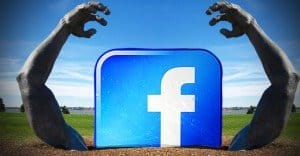 Written by ContentPowered.com
Written by ContentPowered.com
For a while, popular advice on timing for Facebook posts was to post at or just before peak hours. In this case, of course, “peak hours” depends on the page and the business. A business marketing to night-shift workers probably has different peak hours than a page trying to attract 9-5 corporate citizens.
The idea of posting at peak hours was to make sure your message is as fresh and new as possible. Facebook’s sorting algorithm takes time into consideration as a fairly important factor; newer posts quite often gain preference over older posts. Therefore, making your post immediately brand new means it’s as highly situated as possible in that factor. Other factors matter, of course, but it doesn’t hurt to maximize your chances.
The idea of posting just before peak hours was similar; by doing so, you maximize timeliness, while making sure your post is near the top of the news feed as soon as users log in. It should be one of the first things they see. Users are typically more engaged and active for the first half hour after they log on, before marketing fatigue and distractions set in.
In an attempt to bring something a little more scientific to the table, Track Maven did a widespread study testing several of the most popular pieces of Facebook posting advice. One of them, as you can probably guess from the preceding three paragraphs, is posting times.
The Results
The problem with posting during peak hours is that you’re essentially standing on the Wall Street trading floor, trying to get your message heard while everyone else is shouting their messages as well. You have a lot of competition. The most, in fact; peak hours are peak because it’s when the most activity is going on.
Posting at times other than peak hours may not immediately reach your fully audience, because most of them aren’t on and active during that time. Instead, you get two things. First, you get a higher level of interaction amongst the people who are active at those times. There’s less for them to see, less for them to care about, so they’re more receptive of something to read or watch. Thus, they’re more open to watching your videos or reading your posts, and engaging with them.
Second, once peak hours roll around, your posts still exist. They won’t be as fresh, but they’ll still be there for users who scroll down far enough on their feed. How far that takes, of course, depends on the user. There’s not a lot you can do about that.
Buffer coined a term for this; the Late Night Infomercial Effect. The idea is that, like infomercials, you’re not catering to the majority. Instead, you’re just catering to those people who are awake that time of night.
Practical Advice
In order to determine when, exactly, you should post, start doing a few experiments.
First: determine when the peak hours of activity are for your brand. Take a look at your Insights over the course of the last six months and analyze the timing and activity levels of the majority of your users. If you’re a global brand with millions of fans, your times will look close to the global averages. If you’re a smaller, specialized brand, you may be surprised at unusual spikes in activity.
You can capitalize on these spikes of activity by posting just before them, but they won’t be your primary focus. You will also want to post a bit before peak hours, and possible unusually late at night or early in the morning. Schedule these posts, but try to make sure someone is capable of monitoring the posts for issues or comments. Engaging with the late night infomercial viewers will further cement their positive opinion of your page.
As always, you should track the timing of every post and the relative percentage of activity it gets. Take that post’s reach and its engagement and compare them to the reach and engagement of posts made at other times. Try to compare like to like; don’t compare the stats of a giveaway post made during the day to a low-quality link drop in the middle of the night. Likewise, never compare a promoted post to a non-promoted post.
Speaking of promoted posts, you can post an organic post in the middle of the night for the Infomercial effect, and you can promote it the next day for a new wave of engagement. Obviously, you should only do this with posts you consider at least reasonably important.
Posting Frequency
One problem you may run into using this advice is ending up posting 3-5 times per day or more. On Facebook, this can be considered pushing the upper limits of reasonable posting, particularly if you have a smaller audience. This means you may want to carefully measure when your most effective times are, and dial back your frequency to take advantage of the best times. It might be a good idea to divide the day into half-hour segments and, over the course of several weeks, test posts at each time of day.
How often is too often, and how often is just right, for posting? First, go to your Insights and figure out what already works. If you’ve posted an inconsistent number of times throughout the last six months, you’ll have a good sample. If you notice, for example, that on days you posted three times, you received more reach and engagement than on days you posted once, three times is probably better.
Once you know what’s worked in the past, you can try a more scientific exploration of the data. Try posting twice per day for a while, then try posting three times per day, and see how it compares. Try to maintain an equivalent content schedule. You don’t want your data skewed by transitioning from one type of content to another, for example.
You can also consider reach to be an important factor. Reaching more people means more engagement, so posting more often – which gives you more reach – gives you more engagement. To normalize this, once again, compare engagement per reach rather than raw engagement numbers.




what a strange (but good) study. people will try anything 🙂
=] it’s worth a shot, right? It would definitely would make for a fun A/B test.
=] it’s worth a shot, right? It would definitely would make for a fun A/B test.